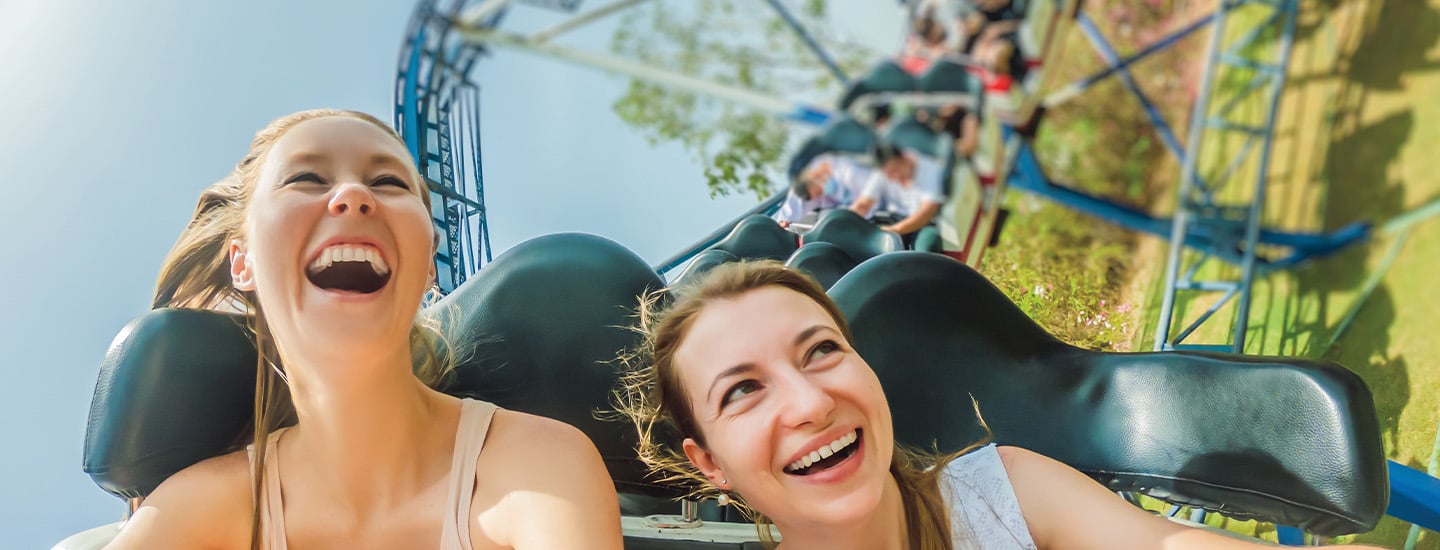Let’s take a ride on the tallest roller coaster on Earth, Kingda Ka. It’s 50 seconds of crazy speed, shocking drops, and wild twists and turns. Are you ready?
The ride begins like a rocket launch. It goes from zero to 128 miles per hour in under four seconds. Your heart pounds as you fly up a tower as tall as a skyscraper. Then you’re going down, and—Ahhhhhhhhhhhhh!
Your guts turn to mush. Your skin strains against your bones. Is this car going to fly off the tracks? Make it stop!
And then it does. The ride is over. You catch your breath. And you realize—that was awesome! You can’t wait to go again.
Every year, tens of millions of people climb on board huge, fast, and scary thrill rides. Those rides take years to create. They cost tens of millions of dollars. And they earn fortunes for the parks that own them.
The tallest roller coaster on Earth is called Kingda Ka. The ride has huge drops. It has wild turns. It moves very fast. It lasts 50 seconds. Do you want to try it?
The ride begins like a rocket launch. It goes from zero to 128 miles per hour in under four seconds. You fly up a tower as tall as a skyscraper. Your heart pounds. Then you go down. Ahhhhhhhhhhhhh!
Your stomach feels twisty. Your skin stretches against your bones. Are you going to fly off the tracks? Make it stop!
And then the ride is over. It was awesome! You want to go again.
Every year, tens of millions of people go on scary thrill rides. Those rides take years to create. They cost tens of millions of dollars. They earn a lot of money for the parks that own them.
It’s 50 seconds of crazy speed, shocking drops, and wild twists and turns. It’s Kingda Ka—the tallest roller coaster on Earth. Are you ready to take a ride?
It begins like a rocket launch, going from zero to 128 miles per hour in under four seconds. Your heart pounds as you zoom up a tower as tall as a skyscraper. Then you’re zooming downward, and—Ahhhhhhhhhhhhh!
Your guts turn to mush, and your skin strains against your bones. Is this car going to fly off the tracks? Make it stop!
And then . . . the ride is over. You finally have a moment to catch your breath. And you realize—that was awesome! You want to go again.
Every year, tens of millions of people climb on board huge, fast, and scary thrill rides. Those rides take years to create, cost tens of millions of dollars, and earn fortunes for the parks that own them.

